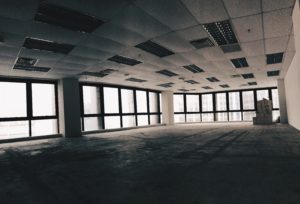Why the Midwest is a Region of Interest for Mark Hanrahan
The real estate market in the United States has been a source of national concern over the past decade. Financial professionals and journalists have closely scrutinized every report on home prices that has been released. These individuals want to know housing trends and the connection of housing to the future health of the national economy. But these reports often focus most closely on coastal real estate markets such as New York, Florida, or San Francisco. The Midwest is also a dynamic region which has experienced a substantial real estate boom. This increase has significantly changed the realities of buying and owning a home for millions of Americans in several Midwest states.
Economic growth
In order to understand recent changes in the Midwest real estate market, one must understand changes that have occurred in the greater economy. The American economy is still growing at a feverish pace. Growth was slow in the years after the Great Recession of 2008-09. At that time, banks were still reluctant to lend, and companies did not want to spend their cash reserves. New home construction slowed, and individuals began to rent much more often than they bought new houses. Apartment buildings were constructed in many areas instead of new subdivisions.
But this trend has begun to change. Growth in the economy at large and in the stock market has clearly influenced the housing market. Banks are more willing to give loans even with higher interest rates. Individuals have more stable jobs that pay a higher salary. They are less interested in renting and more dedicated to buying a home and starting a family. As a result, there is more of a demand for housing and an overall increase in housing prices. Higher prices mean more sellers and houses that stay on the market for only weeks or days. Greater real estate pressure causes individuals to research and select the perfect markets for their eventual purchases.
Urban demand
The economic boon throughout the country has expanded to the Midwest. Earlier trends in coastal cities prioritized life in downtown areas. San Francisco, New York, and Boston all saw massive growth in historic apartment buildings and older brownstones. According to real estate expert Mark Hanrahan, the trend is beginning to take root in many cities in the Midwest. Cities such as Cedar Rapids, Des Moines, and Cleveland have begun to embrace alternative economic models from their Rust Belt pasts. They have embraced banking, tourism, and high-tech businesses. Those businesses are constructing new headquarters and spearheading downtown revitalization efforts that have made historic downtowns safer than before. As a result, millions of individuals are moving back to the region’s cities and causing resulting shifts in the health of certain neighborhoods.
What to do
A potential real estate boom means that citizens in the Midwest need to act quickly. Even short delays might result in an individual paying thousands of dollars more than they would have otherwise. These individuals interested in the Midwest market should contact a real estate agent who knows the local market and knows how much they should list their house for. Contacting a real estate agent helps individuals ensure that they can afford a certain house in a certain neighborhood. A real estate agent might know the latest houses that are on the market and the newest subdivisions to be built. Working with an individual like Mark Hanrahan can save an individual hundreds of hours of research in the real estate field.
Conclusion
Individuals looking for a new home need to be aware of greater trends in areas such as the Midwest. They need to be aware of the growth of different neighborhoods and how economic growth changes the economic viability of those neighborhoods. Most importantly, they need an experienced partner like Mark Hanrahan to help guide them through a confusing mess of neighborhoods and trends to find their eventual home.



